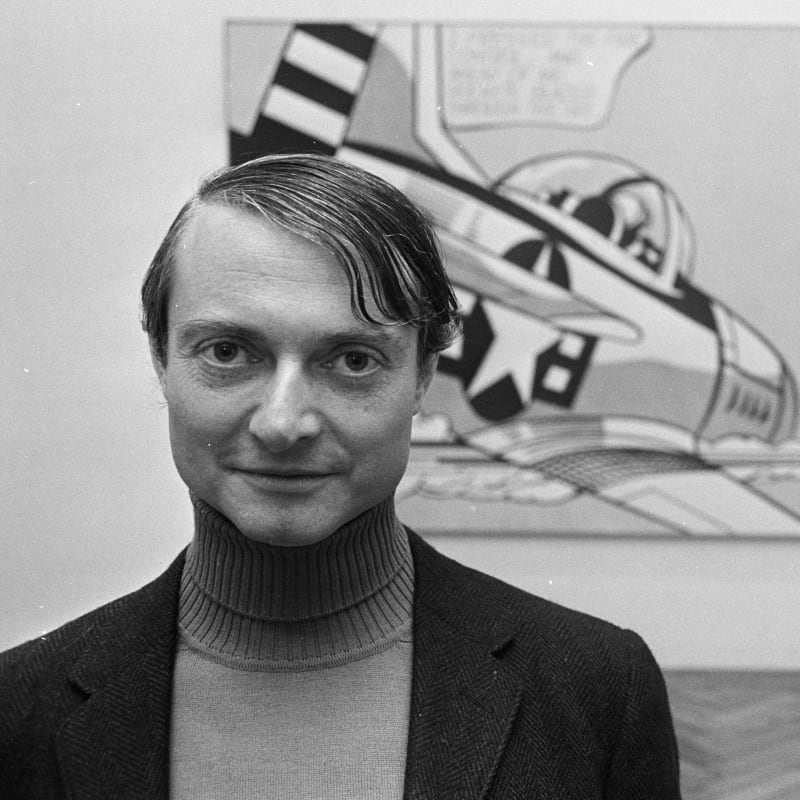"Art doesn't transform. It just plain forms."
-Roy Lichtenstein
Career
In 1951, Lichtenstein had his first solo exhibition at the Carlebach Gallery in New York. He moved to Cleveland in the same year, where he remained for six years. In between periods of painting, he undertook various jobs from a draftsman to a window decorator; his work at this time fluctuated between Cubism and Expressionism. In 1957, he moved back to upstate New York and began teaching again; it was at this time that he adopted the Abstract Expressionism style. Lichtenstein began teaching upstate at the State University of New York at Oswego in 1958. About this time, he began to incorporate hidden images of cartoon characters such as Mickey Mouse and Bugs Bunny into his abstract works.
In 1961, Lichtenstein began his first pop paintings using cartoon images and techniques derived from the appearance of commercial printing. This phase would continue to 1965 and included the use of advertising imagery suggesting consumerism and homemaking. His first work to feature the large-scale use of hard-edged figures and Ben-Day dots was Look Mickey (1961). This piece came from a challenge from one of his sons, who pointed to a Mickey Mouse comic book and said; "I bet you can't paint as good as that, eh, Dad?" In the same year he produced six other works with recognizable characters from gum wrappers and cartoons. In 1961, Leo Castelli started displaying Lichtenstein's work at his gallery in New York. Lichtenstein had his first one-man show at the Castelli gallery in 1962; the entire collection was bought by influential collectors before the show even opened. It was at this time that Lichtenstein began to find fame not just in America, but worldwide.
